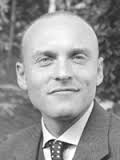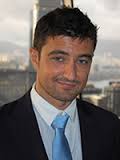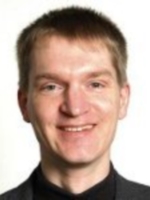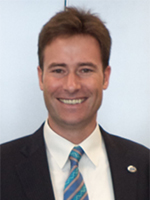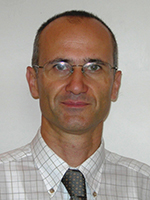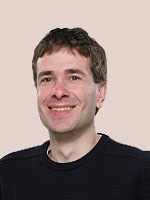4th International Electronic Conference on Sensors and Applications
Part of the International Electronic Conference on Sensors and Applications series
15–30 November 2017
- Go to the Sessions
- Event Details
Welcome from the Chairs
Welcome from the Conference Chairs of the 4th International Electronic Conference on Sensors and Applications
All participants of ECSA-4 are welcome to submit the extended work to the Sensors Special Issue "Selected Papers from the 4th International Electronic Conference on Sensors and Applications".
We gladly announce that Dr. Francisco Falcone, Prof. Kunio Shimada, Mr. Stephen Reece, Dr. Filippo Ubertini,
Prof. Dr. U. Schmid and Prof. Hugo J. Avila-Paredes' papers were awarded the ECSA-4 Best Paper Award in 2017.
We are pleased to announce the 4th International Electronic Conference on Sensors and Applications. After the success of the three editions from 2014 to 2016, this year edition will focus on 5 thematic areas where sensors are changing science:
- Biosensors (Session A)
- Chemical Sensors (Session B)
- Physical Sensors (Session C)
- Sensor Networks (Session D)
- Applications (Session E)
There will be 2 specific sessions:
and also a Poster session. Posters can be presented without an accompanying proceedings paper and will be available online on this website during and after the e-conference. However, they will not be added to the proceedings of the conference.
Participants will have the opportunity to examine, explore and critically engage with issues and advances in these areas. We hope to facilitate discussions and exchange within the community.
This event will solely be an online proceeding which allows the participation from all over the world with no concerns of travel and related expenditures. This type of conference is particularly appropriate and useful because research concerned with sensors is progressing rapidly. An electronic conference provides a platform for rapid and direct exchanges about the latest research findings and novel ideas. The participation as well as the “attendance” of this online conference is free of charge.
The 4th International Electronic Conference on Sensors and Applications will be held at https://sciforum.net/conference/ecsa-4, on a platform developed by MDPI to organize electronic conferences.
The 4th International Electronic Conference on Sensors and Applications is sponsored by MDPI and the scientific journals Sensors. Accepted papers will be published in the proceedings of this e-conference, and selected papers will be published in Sensors with a 20% discount off the APC. Sensors is an Open Access publication journal of MDPI in the field of the science and technology of sensors and biosensors (https://www.mdpi.com/journal/sensors).
We hope the community will share this enthusiasm and help making this 4th edition a success – for many to come in the future.
The Chairs of the 4th International Electronic Conference on Sensors and Applications.
|
Dr. Stefano Mariani |
Dr. Francesco Ciucci |
Dr. Dirk Lehmhus |
|
Dr. Thomas B. Messervey |
Dr. Alberto Vallan |
Dr. Stefan Bosse |
Brief Bio-Sketch of Dr. Stefano Mariani
Stefano Mariani received an M.S. degree (cum laude) in civil engineering in 1995 , and a Ph.D. degree in structural engineering in 1999; both degrees are from the Polytechnic University of Milan. He is currently an associate professor at the Department of Civil and Environmental Engineering of the Polytechnic University of Milan. He was a research scholar at the Danish Technical University in 1997, an adjunct professor at Penn State University in 2007, and a visiting professor at the Polytechnic Institute of New York University in 2009. He is a member of the Editorial Boards of: Algorithms; Applied Mathematics and Sciences; the International Journal of Computer Science and Application; the International Journal of Information and Computer Science; the International Journal on Advances in Systems and Measurements; Micromachines; Open Transactions on Wireless Sensor Network; the PIRAD Journal of Sensors; and Sensors. His main research interests are: the reliability of MEMS that are subject to shocks and drops; the structural health monitoring of composite structures through MEMS sensors; numerical simulations of ductile fracture in metals and of quasi-brittle fracture in heterogeneous and functionally graded materials; extended finite element methods; the calibration of constitutive models via extended and sigma-point Kalman filters; and multi-scale solution methods for dynamic delamination in layered composites.
Brief Bio-Sketch of Dr. Francesco Ciucci
Francesco Ciucci is an assistant professor in Mechanical and Aerospace Engineering and in Chemical and Biomolecular Engineering at the Hong Kong University of Science and Technology. He received his M.Sc. and Ph.D. in Mechanical Engineering at the California Institute of Technology; his education was supported by a Rotary Ambassadorial Scholarship and a Bechtel Fellowship. He pursued a postdoctoral fellowship at the University of Heidelberg’s Institute of Scientific Computing, where he received a Marie Curie Reintegration Grant from the European Union (2010-2013). Prior to that, he obtained a dual M.Sc. degree in Applied Mathematics/Applied Physics at the Ecole Centrale Paris, France and in Aerospace Engineering at the Polytechnic University of Milan, Italy. His current research interests include: modeling electrochemical devices (fuel cells, batteries, and sensors), optimal experimental design, numerical methods for energy conversion and storage, and SOFC material development.
Brief Bio-Sketch of Dr. Dirk Lehmhus
Dirk Lehmhus received his mechanical engineering diploma based on studies (at Volkswagen’s central laboratory) dedicated to the galvanic corrosion of magnesium alloys. He joined Fraunhofer IFAM in 1998, and has been working on metallic foams and structures since then. Dr. Lehmhus obtained a PhD in production technology at Bremen University for studies concerning the optimization of aluminum foam production processes and properties. From 2006 to 2009, he lectured on “Materials Science and Mechanics” at the University of Applied Science (FH) Bremen. In May 2009, he moved to the University of Bremen to become managing director of its Scientific Center ISIS (Integrated Solutions in Sensorial Structure Engineering), the foundation of which he helped organize. The center is dedicated to the development of sensorial materials and sensor-equipped structures. Since 2009, he has been regularly involved in topic and symposium coordination at the Euromat conference series, with a special focus on materials with transport applications.
Brief Bio-Sketch of Dr. Thomas B. Messervey
Tom Messervey has over 20 years of engineering experience, which includes military service in the US Army Corps of Engineers, industrial experience with the Italian Engineering Company, D’Appolonia, teaching excellence at the United States Military Academy at West Point, and coaching services as the EU Facilitator for the Intelligent Manufacturing Systems program (www.ims.org). He serves as an expert for the European Commission in textiles, manufacturing, and energy efficiency. His research interests focus on using sensor data to make better engineering decisions across design, assessment, maintenance, inspections, and energy management to include machine learning. He is a member of the International Association of Bridge Maintenance and Safety (IABMAS), the International Association of Life Cycle Civil Engineering (IALCCE), and a technical reviewer for the International Journal of Safety and Security Engineering and the Journal of Structure and Infrastructure Engineering.
Brief Bio-Sketch of Dr. Alberto Vallan
Alberto Vallan received the M.S. degree in Electronic Engineering from the Politecnico di Torino (Italy) in 1996 and the Ph.D. degree in Electronic Instrumentation from the University of Brescia (Italy) in 2000. He is currently an Assistant Professor of Electronic Measurements with the Department of Electronics and Telecommunications of the Politecnico di Torino. His research interests are mainly in the measurement and sensor fields and are focused on the development and characterization of fiber sensors and measuring instruments for industrial applications. Dr. Vallan is a Senior Member of the IEEE/Instrumentation & Measurement Society.
Brief Bio-Sketch of Dr. Stefan Bosse
Stefan Bosse received his physics diploma in the year 1998 at the University of Bremen addressing surface distortion measuring methods based on correlation analysis of scattered laser light. He received a doctoral degree in physics in the year 2002 at the University of Bremen based on laser-light scattering measuring methods used for high-viscose liquid flow analysis. Beside natural science, his scientific interests were devoted from the beginning to distributed computing systems and distributed operating systems. In the year 2004 he joined the Department of Computer Science and the working group robotics working as a senior researcher and lecturer. Since 2002 until today he focuses his work on parallel and distributed systems in general, sensor networks and sensorial materials, Artificial Intelligence (Agents and Machine Learning), Cloud-based computing and the Internet-of-Things, but also on System-on-Chip circuit design and computer aided design (high-level synthesis). Interdisciplinary work is one major skill. Since 2008 he conducts projects in the ISIS Sensorial Materials Scientific Centre pushing interdisciplinary research bridging material and computer sciences, and recently joining the ISIS council. He acts as a reviewer and guest editor for international journals and joins international conference programme committees, and he gives multiple lectures at the University covering basics of computer science, parallel and distributed systems, circuit design, and material-integrated sensing systems.
Call for Participation
The 4th International Electronic Conference on Sensors and Applications will be held from 15–30 November 2017 in the internet environment. This event will solely be an online proceeding which allows the participation from all over the world with no concerns of travel and related expenditures, while at the same time making rapid and direct exchanges about the latest research findings and novel ideas in sensors. All proceedings will be held online at https://sciforum.net/conference/ecsa-4 and in Journal Proceedings.
The conference aims to bring the scientists working in the field onto a common platform and promote and advance the exciting and rapidly changing field of sensing technologies and applications along the following 5 main themes:
- Biosensors (Session A)
- Chemical Sensors (Session B)
- Physical Sensors (Session C)
- Sensor Networks (Session D)
- Applications (Session E)
and 2 specific sessions:
and also a Poster Session. Posters can be presented without an accompanying proceedings paper and will be available online on this website during and after the e-conference. However, they will not be added to the proceedings of the conference.
Abstracts (in English) should be submitted by 1 October 2017 online at https://www.sciforum.net/login. For accepted abstracts, the full paper can be submitted by 21 October 2017 . The conference itself will be held from 15–30 November 2017.
Paper Submission GuidelinesFor information about the procedure for submission, peer-review, revision and acceptance of conference proceedings papers, please refer to the section "Instructions for Authors": https://www.sciforum.net/conference/ecsa-4/page/instructions.
Conference Chairs
stefano.mariani@polimi.it
francesco.ciucci@ust.hk
dirk.lehmhus@uni-bremen.de
thomas.messervey@r2msolution.com
alberto.vallan@polito.it
sbosse@uni-bremen.de
Instructions for Authors
Submissions should be done by the authors online by registering with www.sciforum.net, and using the "New Submission" function once logged into system.
- Scholars interested in participating with the conference can submit their abstract (about 200-250 words covering the areas of manuscripts for the proceedings issue) online on this website until 1 October 2017.
- The Conference Committee will pre-evaluate, based on the submitted abstract, whether a contribution from the authors of the abstract will be welcome for the 4th International Electronic Conference on Sensors and Applications. All authors will be notified by 5 October 2017 about the acceptance of their abstract.
- If the abstract is accepted for this conference, the author is asked to submit the manuscript, optionally along with a PowerPoint and/or video presentation of his/her paper (only PDF), until the submission deadline of 21 October 2017.
- The conference proceedings papers and presentations will be available on sciforum.net/conference/ecsa-4 for discussion during the time of the conference 15–30 November 2017 and will be published in Journal Proceedings.
- The Open Access Journal Sensors will publish Special Issue of the conference and accepted papers will be published in the proceedings of the conference itself. After the conference, the Conference Committee will select manuscripts that may be included for publication in the Special Issue of the journal Sensors (the submission to the journal is independent from the conference proceedings and will follow the usual process of the journal, including peer-review, APC, etc.).
Manuscripts for the proceedings issue must have the following organization:
First page:
- Title
- Full author names
- Affiliations (including full postal address) and authors' e-mail addresses
- Abstract (200-250 words)
- Keywords
- Introduction
- Methods
- Results and Discussion
- Conclusions
- (Acknowledgements)
- References
Manuscripts should be prepared in MS Word or any other word processor and should be converted to the PDF format before submission. The publication format will be PDF. The manuscript should count at least 3 pages (incl. figures, tables and references) and should not exceed 6 pages.
Authors are encouraged to prepare a presentation in PowerPoint or similar software, to be displayed online along with the Manuscript. Slides, if available, will be displayed directly in the website using Sciforum.net's proprietary slides viewer. Slides can be prepared in exactly the same way as for any traditional conference where research results can be presented. Slides should be converted to the PDF format before submission so that our process can easily and automatically convert them for online displaying.
Besides their active participation within the forum, authors are also encouraged to submit video presentations. If you are interested in submitting, please contact the conference organizer – ecsa@mdpi.com to get to know more about the procedure. This is an unique way of presenting your paper and discuss it with peers from all over the world. Make a difference and join us for this project!
Submission: Manuscripts should be submitted online at www.sciforum.net/login by registering and logging in to this website.
Accepted File Formats
- MS Word: Manuscript prepared in MS Word must be converted into a single file before submission. When preparing manuscripts in MS Word, the Electronic Conference on Sensors and Applications Microsoft Word template file (see download below) must be used. Please do not insert any graphics (schemes, figures, etc.) into a movable frame which can superimpose the text and make the layout very difficult.
- Paper Format: A4 paper format, the printing area is 17.5 cm x 26.2 cm. The margins should be 1.75 cm on each side of the paper (top, bottom, left, and right sides).
- Paper Length: The conference proceedings paper should not be longer than 6 pages. The conference manuscript should be as concise as possible.
- Formatting / Style: The paper style of the Journal Sensors should be followed. You may download the template file to prepare your paper (see above). The full titles and the cited papers must be given. Reference numbers should be placed in square brackets [ ], and placed before the punctuation; for example [4] or [1-3], and all the references should be listed separately and as the last section at the end of the manuscript.
- Authors List and Affiliation Format: Authors' full first and last names must be given. Abbreviated middle name can be added. For papers written by various contributors a corresponding author must be designated. The PubMed/MEDLINE format is used for affiliations: complete street address information including city, zip code, state/province, country, and email address should be added. All authors who contributed significantly to the manuscript (including writing a section) should be listed on the first page of the manuscript, below the title of the article. Other parties, who provided only minor contributions, should be listed under Acknowledgments only. A minor contribution might be a discussion with the author, reading through the draft of the manuscript, or performing English corrections.
- Figures, Schemes and Tables: Authors are encouraged to prepare figures and schemes in color. Full color graphics will be published free of charge. Figure and schemes must be numbered (Figure 1, Scheme I, Figure 2, Scheme II, etc.) and a explanatory title must be added. Tables should be inserted into the main text, and numbers and titles for all tables supplied. All table columns should have an explanatory heading. Please supply legends for all figures, schemes and tables. The legends should be prepared as a separate paragraph of the main text and placed in the main text before a table, a figure or a scheme.
It is the authors' responsibility to identify and declare any personal circumstances or interests that may be perceived as inappropriately influencing the representation or interpretation of clinical research. If there is no conflict, please state here "The authors declare no conflict of interest." This should be conveyed in a separate "Conflict of Interest" statement preceding the "Acknowledgments" and "References" sections at the end of the manuscript. Financial support for the study must be fully disclosed under "Acknowledgments" section.
CopyrightMDPI AG, the publisher of the Sciforum.net platform, is an open access publisher. We believe that authors should retain the copyright to their scholarly works. Hence, by submitting a Communication paper to this conference, you retain the copyright of your paper, but you grant MDPI AG the non-exclusive right to publish this paper online on the Sciforum.net platform. This means you can easily submit your paper to any scientific journal at a later stage and transfer the copyright to its publisher (if required by that publisher).
List of accepted submissions (49)
| Id | Title | Authors | Poster PDF | ||||||||||||||||||||||||||||||||||||||
|---|---|---|---|---|---|---|---|---|---|---|---|---|---|---|---|---|---|---|---|---|---|---|---|---|---|---|---|---|---|---|---|---|---|---|---|---|---|---|---|---|---|
| sciforum-013746 | Recent Advances on SHM of Reinforced Concrete and Masonry Structures Enabled by Self-Sensing Structural Materials | , , , , , |
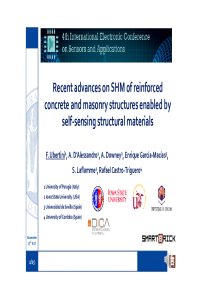
|
Show Abstract |
|||||||||||||||||||||||||||||||||||||
|
Structural Health Monitoring is aimed at transforming civil structures into self-diagnosing systems able to automatically reveal the occurrence of a fault or a damage after a critical event such as an earthquake. While data science is presently experiencing a tremendous development, leading to the availability of powerful tools and algorithms that extract relevant information by effectively fusing data provided by different types of sensors, one of the main bottlenecks still limiting the development of SHM in the filed of civil engineering is the general lack of reliable sensing technologies that are effectively applicable to the large scale. A very promising solution to such a large scale challenge would be using the same construction materials for strain sensing and direct damage detection. In this view, the authors have recently proposed smart concretes and smart bricks that are piezoresistive concretes and clay bricks obtained by doping traditional construction materials with conductive nano- or micro inclusions. These novel multifunctional materials have the ability to provide measurable electrical output under application of a mechanical load and to provide information useful for damage detection, localization and quantification. The paper introduces both technologies, discusses their potentials and illustrates their application to paradigmatic structural elements arranged in the laboratory. The presented results contribute to showing the revolutionary impact that smart concretes and smart bricks may have in the near future on SHM of concrete and masonry structures. |
|||||||||||||||||||||||||||||||||||||||||
| sciforum-013922 | Elastic Dry-Type Solar Cell Rubber with Photovoltaics and Piezoelectricity for Compressive Sensing | N/A |
Show Abstract |
||||||||||||||||||||||||||||||||||||||
|
Ordinary solar cell is too hard to bend or be squashed by compression, and to be extended by tensile strength. Because it is generally made of plastic polymer. However, if the one has elastic, flexible and extensible property as well as sensing of piezoelectricity, it is useful and effective on the artificial skin installed over a human-like robot as a husk which generates electric power in itself by solar and perceives any forces or temperature. Or other varied engineering applications will be feasible. In addition, such hybrid functions of both photovoltaics and piezoelectricity does not need any power supply or battery to be equipped. The solar cell with sensing developed in the present paper is novel in solar cell and sensor fields. For the realization of the elastic solar cell, it was made of natural rubber and electrolytically polymerized with configuration of magnetic clusters of metal particles by aiding a magnetic field, corresponding to the MCF rubber which the present author had developed as an elastic, flexible and extensible sensor made of natural rubber. The principle of photovoltaics and piezoelectricity was elucidated. The photo-voltage and current were measured under the photo-excitation based on the p- and n-type semiconductor resulted from the electrolytic polymerization of MCF rubber or from the doping, or on the dye. For clarifying piezoelectricity the compressive sensing was measured under compression. |
|||||||||||||||||||||||||||||||||||||||||
| sciforum-015389 | Cost-benefit optimization of sensor networks for SHM applications | , , |

|
Show Abstract |
|||||||||||||||||||||||||||||||||||||
|
Structural health monitoring (SHM) is aimed to obtain information about the structural integrity of a system, e.g. via the estimation of its mechanical properties through observations |
|||||||||||||||||||||||||||||||||||||||||
| sciforum-013957 | Planar localization of radio-frequency or acoustic sources with two receivers | , , | N/A |
Show Abstract |
|||||||||||||||||||||||||||||||||||||
|
In the localization of electromagnetic or acoustic emitters, generally, when a pulse is radiated from a source, the wave will arrive to two receivers at different times. One of the advantages of measuring these time differences of arrival or TDOA is that it is not required a common clock as in other localization techniques based on the time of arrival of the pulse to the receiver. With only two sensors, all the possible points in the plane that would give the same TDOA describe a hyperbola. Using an independent third receiver and calculating the intersection of the three hyperbolas will give the position of the source. Therefore, planar localization of emitters using multilateration techniques can be solved at least with three receivers. This paper presents a method to locate sources in a plane with only two receivers reducing the number of acquisition channels and hence, the cost of the equipment. One of the receivers is in a fixed position and the other describes a circumference around the first one. The TDOA are measured at different angles completing a total turn and obtaining a periodic function, angle versus TDOA, that has all the geometric information needed to locate the source. The paper will show how to derive this function analytically with the distance from the fixed receiver to the source and a bearing angle as parameters. Then, it will be demonstrated that it is possible to fit the curve with experimental measurements to obtain the parameters of the position of the source. |
|||||||||||||||||||||||||||||||||||||||||
| sciforum-013983 | Observability and Performance Analysis of Velocity Measurements with Lever Arm Aided INS | , , | N/A |
Show Abstract |
|||||||||||||||||||||||||||||||||||||
|
In most autonomous vehicles the navigation subsystem is based on Inertial Navigation System (INS). Regardless of the INS grade, its navigation solution drifts in time. To avoid such a drift, the INS is fused with external sensor measurements. Recent publications show that the lever-arm, the relative position between the INS and aiding sensor, has influence on the navigation performance. Most published research in this field is focused on INS/GNSS fusion with GNSS position updates only where performance and analytical observability analysis were made to examine the consequence of vehicle maneuvers on the estimation of the lever-arm states. Yet, besides position updates, a variety of sensors measuring the vehicle velocity vector are available including GNSS and a Doppler velocity log. As in position measurements, when performing INS/velocity measurements fusion, the lever-arm must be taken account for. In this paper, an analytical observability and performance analysis for velocity measurements with lever-arm aided INS is derived for stationary conditions. The observable and unobservable subspaces are derived for two error-stets models: 1) a 12 error-state model (the position and lever-arm error-states are not included) yet the lever-arm is present in the measurement equation and 2) a 15 error-state model including the lever-arm error-states. The analytical closed form expressions are verified by numerical simulation. |
|||||||||||||||||||||||||||||||||||||||||
Keynote Speakers
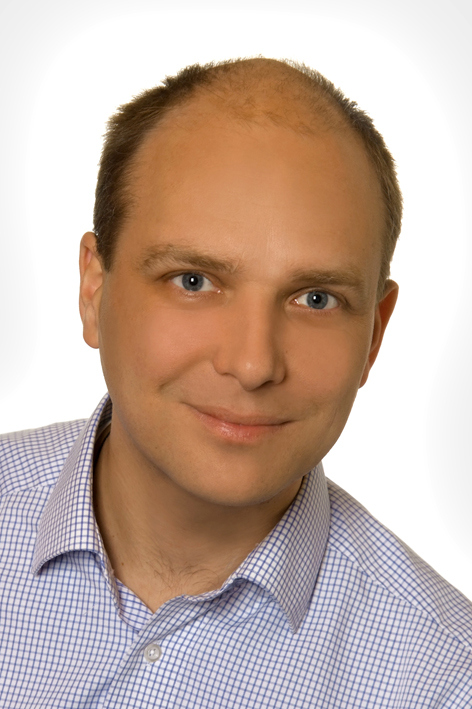
U. Schmid was born in Munich, Germany, in 1972. He started studies in physics and mathematics at the University of Kassel in 1992. In 1995, he spent 6 months at the Transport Group in the Physics Department, University of Nottingham, UK, to gain experience in wide band gap semiconductor physics. He performed his diploma work at the research laboratories of the Daimler-Benz AG (now Daimler AG) on the electrical characterization of silicon carbide (6H-SiC) junction field effect transistors at high temperatures. During this time, he also investigated metal-oxide-semiconductor (MOSiC) based structures, such as gate controlled diodes, MOSFETs, and integrated circuits for harsh environment applications. He finished his studies in 1998 at the University of Frankfurt/Main, Germany. In 1999, he joined the research laboratories of DaimlerChrysler AG (now Airbus Group) in Ottobrunn/Munich, Germany. He developed a robust flow sensor for high-pressure automotive applications and received his Ph.D. degree in 2003 from the Technische Universität München, Germany. From 2003 to 2008, he was Post-doc at the Chair of Micromechanics, Microfluidics/Microactuators at Saarland University. Since October 2008, he is full professor for Microsystems Technology at TU Wien heading since the beginning of 2012 the Institute of Sensor and Actuator Systems. U. Schmid has authored or co-authored more than 300 peer-reviewed publications in journals and conferences and holds more than 40 different patent families.
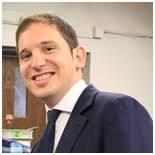
Filippo Ubertini, born in 1982, is an Associate Professor of Structural Design at the Department of Civil and Environmental Engineering of University of Perugia, Italy, where he currently teaches "Advanced Structural Design". He graduated cum laude in Civil Engineering at University of Perugia in 2005 and received his Ph.D. degree in Civil Engineering from University of Pavia in 2009. He was visiting scholar at Columbia University in 2008 and has been invited to give talks in several leading international universities around the world. He is author of more than 100 scientific papers among which 50 in refereed international journals. He is currently member of the editorial boards of Shock and Vibration, Mathematical Problems in Engineering and Journal of Smart Cities. Aided by a group of young and motivated researchers, he is currently leading a research effort focusing on novel solutions for structural health monitoring, with emphasis on dynamic methods and system identification, smart structural materials (smart concretes and smart bricks) and applications to earthquake engineering and cultural heritage structures.
Dr. Ubertini's research has been funded at European and National levels and has been acknowledged through mentions in media and awards.
Conference Schedule
Notification of Acceptance: 5 October 2017
Proceedings Paper Submission Deadline: 21 October 2017
Conference Open: 15–30 November 2017
Conference Organizers
Dr. Stefano Mariani
Department of Civil and Environmental Engineering Politecnico di Milano, Italy
Editorial Board Member and Guest Editor of several
Special Issues of the Journal Sensors
Dr. Francesco Ciucci
The Hong Kong University of Science and Technology, Kowloon, Hong Kong
Dr. Dirk Lehmhus
ISIS Sensorial Materials Scientific Centre, University of Bremen, Bremen, Germany
Dr. Thomas B. Messervey
CEO and Co-Founder, Research to Market Solution s.r.l., Pavia, Italy
Dr. Alberto Vallan
Department of Electronics and Telecommunications Politecnico di Torino, Turin, Italy
Dr. Stefan Bosse
Department of Mathematics and Computer Science, University of Bremen, Bremen, Germany
Scientific Advisory Committee
Dr. Stefano Mariani, Department of Civil and Environmental Engineering, Politecnico di Milano, Italy
Dr. Francesco Ciucci, The Hong Kong University of Science and Technology, Hong Kong
Dr. Dirk Lehmhus, ISIS Sensorial Materials Scientific Centre, University of Bremen, Germany
Dr. Thomas B. Messervey, CEO and Co-Founder, Research to Market Solution s.r.l., Italy
Dr. Alberto Vallan, Department of Electronics and Telecommunications, Politecnico di Torino, Italy
Dr. Stefan Bosse, Department of Mathematics and Computer Science, University of Bremen, Germany
Dr. Francisco Falcone, Universidad Publica de Navarra, Institute for Smart Cities—UPNA, Spain
Dr. Cinzia Caliendo, Institute of Photonics and Nanotechnology, IFN, National Research Council of Italy, CNR, Italy
Prof. Dr. Jamal Deen, Distinguished University Professor, Electrical and Computer Engineering Department,
McMaster University, Canada
Prof. Dr. Huangxian Ju, Department of Chemistry, Nanjing University, China
Prof. Dr. Spas D. Kolev, School of Chemistry, The University of Melbourne, Australia
Prof. Dr. Shinya Maenosono, School of Materials Science, Japan Advanced Institute of Science and Technology, Japan
Dr. Matteo Tonezzer, IMEM—CNR Institute of Materials for Electronics and Magnetism, Italian National Research Council, Italy
Prof. Dr. Juan A. Gomez-Pulido, Computer Architecture and Logic Design Group (ARCO), Department of Technologies of Computers and Communications, University of Extremadura, Spain
Prof. Dr. Maurizio Valle, Department of Electrical, Electronic and Telecommunications Engineering, and Naval Architecture, University of Genova, Italy
Prof. Dr. Dusan Losic, School of Chemical Engineering, University of Adelaide, Australia
Dr. Peter J. Cragg, School of Pharmacy and Biomolecular Sciences, University of Brighton, UK
Conference SecretariatDr. Lily Sun
MDPI Branch Office, Beijing
E-Mail: ecsa@mdpi.com
Ms. Lin Li
MDPI Branch Office, Beijing
E-Mail: ecsa@mdpi.com
For information regarding sponsoring opportunities, please contact the conference secretariat.
List of Keynotes & Videos
Piezoelectric Microsystems: Material Aspects, Devices and Applications
A. Biosensors
Section Chair:
Dr. Stefano Mariani, Department of Civil and Environmental Engineering, Politecnico di Milano, Italy
Session Chair
Dr. Stefano Mariani, Politecnico di Milano
Show all published submissions (2) Hide published submissions (2)
Submissions
List of Papers (2) Toggle list
C. Physical Sensors
Section Chairs:
Dr. Dirk Lehmhus, ISIS Sensorial Materials Scientific Centre, University of Bremen, Germany
Dr. Alberto Vallan, Department of Electronics and Telecommunications, Politecnico di Torino, Italy
Session Chairs
Dr. Dirk Lehmhus, Fraunhofer IFAM
Professor Alberto Vallan, Politecnico di Torino
Show all published submissions (6) Hide published submissions (6)
Submissions
List of Papers (6) Toggle list
D. Sensors networks
Section Chair:
Dr. Stefano Mariani, Department of Civil and Environmental Engineering, Politecnico di Milano, Italy
Session Chair
Dr. Stefano Mariani, Politecnico di Milano
Show all published submissions (2) Hide published submissions (2)
Submissions
List of Papers (2) Toggle list
E. Applications
Section Chair:
Dr. Thomas B. Messervey, CEO and Co-Founder, Research to Market Solution s.r.l., Italy
Session Chair
Dr. Thomas Messervey
P. Posters
In this section, posters can be presented without an accompanying proceedings paper. Posters will be available online on this website during and after the e-conference. However, will not be added to the proceedings of the conference.
Show all published submissions (1) Hide published submissions (1)
Submissions
List of Papers (1) Toggle list
S1. Smart Cities
Section Chair:
Dr. Thomas B. Messervey, CEO and Co-Founder, Research to Market Solution s.r.l., Italy
Sensors, sensor networks and the information they provide are the fundamental building block of smart cities and everything they have to offer toward improving the quality of life. This session encourages researchers worldwide to share their sensors and applications related to smart cities as we build the urban future of tomorrow. Topics are not limited to but could include submissions related to:
- Smart buildings and district heating/cooling
- Smart grids
- Smart water
- Environmental monitoring
- Transport, infrastructure & mobility
- Internet of Things (IoT) and protocols they operate within
- Sensors to empower citizens and improve quality of life
- Sensors to improve and make efficient public services and emergency services
Session Chair
Dr. Thomas Messervey
Show all published submissions (8) Hide published submissions (8)
Submissions
List of Papers (8) Toggle list
S2. Smart Sensing Systems and Structures
Section Chairs:
Dr. Dirk Lehmhus, ISIS Sensorial Materials Scientific Centre, University of Bremen, Germany
Dr. Stefan Bosse, Department of Computer Science, Workgroup Robotics, University of Bremen, Bremen, Germany
Trends emerging in engineering and micro-system applications such as the development of sensorial materials show a growing demand for distributed autonomous computing in sensor networks consisting of miniaturized low-power smart sensors embedded in technical structures. A Sensor Network is composed of nodes capable of sensor processing and communication. Smart Systems are composed of more complex networks (and networks of networks) differing significantly in computational power and available resources. They provide higher level information processing that maps the raw sensor data to condensed information. They can provide, for example, Internet connectivity of perceptive systems (body area networks...). These smart systems unite the traditionally separated sensing, aggregation, and application levels, offering a more unified design approach and more generic and unified architectures. Smart systems glue software and hardware components to an extended operational unit.
Smart can be defined on different operational and processing levels and having different goals in mind. One aspect is the adaptivity and reliability in the presence of sensor, communication, node, and network failures that should not compromise the trust and quality of the computed information, for example, the output of a Structural Health Monitoring System (SHM). A Smart System can be considered on node, network, and network of network level. Another aspect of "smartness" is information processing with inaccurate or incomplete models (mechanical, technical, physical) requiring machine learning approaches, either supervised with training at design-time or unsupervised based on reward learning at run-time.
Growing system complexity requires an increase in autonomy of distributed data processing systems, addressed, for example, by the deployment of mobile multi-agent systems carrying and processing information. Self-organizing systems are one major approach to solve complex tasks by decomposing them into smaller and simpler task performed by a large group of individuals.
Smart "Functional" Structures extend classical perceptive systems with actuators responding to changes in the environment or load conditions in real-time, enabling Reactive Perceptive Systems.
Topics included but not limited to are:
- Software engineering for sensing applications and sensor clouds
- Data mining in sensing applications
- Autonomous computing systems
- Multi-agent systems and intelligent computing
- Machine learning supporting sensing applications
- Ubiquitous smart systems and applications
- Sensor cloud, cluster and grid computing
- Internet of Things
- Human-computer, human-sensing, and human-machine interaction
- Machine-to-Machine (M2M) networks
- Service-orientated information processing and computing
- Reliable and fault-tolerant system design and algorithms
- Platform design and architectures
- Active perceptive systems coupling sensing + actuation including robotic systems
Session Chairs
Dr. Dirk Lehmhus, Fraunhofer IFAM
Dr. Stefan Bosse, University of Bremen
Show all published submissions (7) Hide published submissions (7)
Submissions
List of Papers (7) Toggle list




